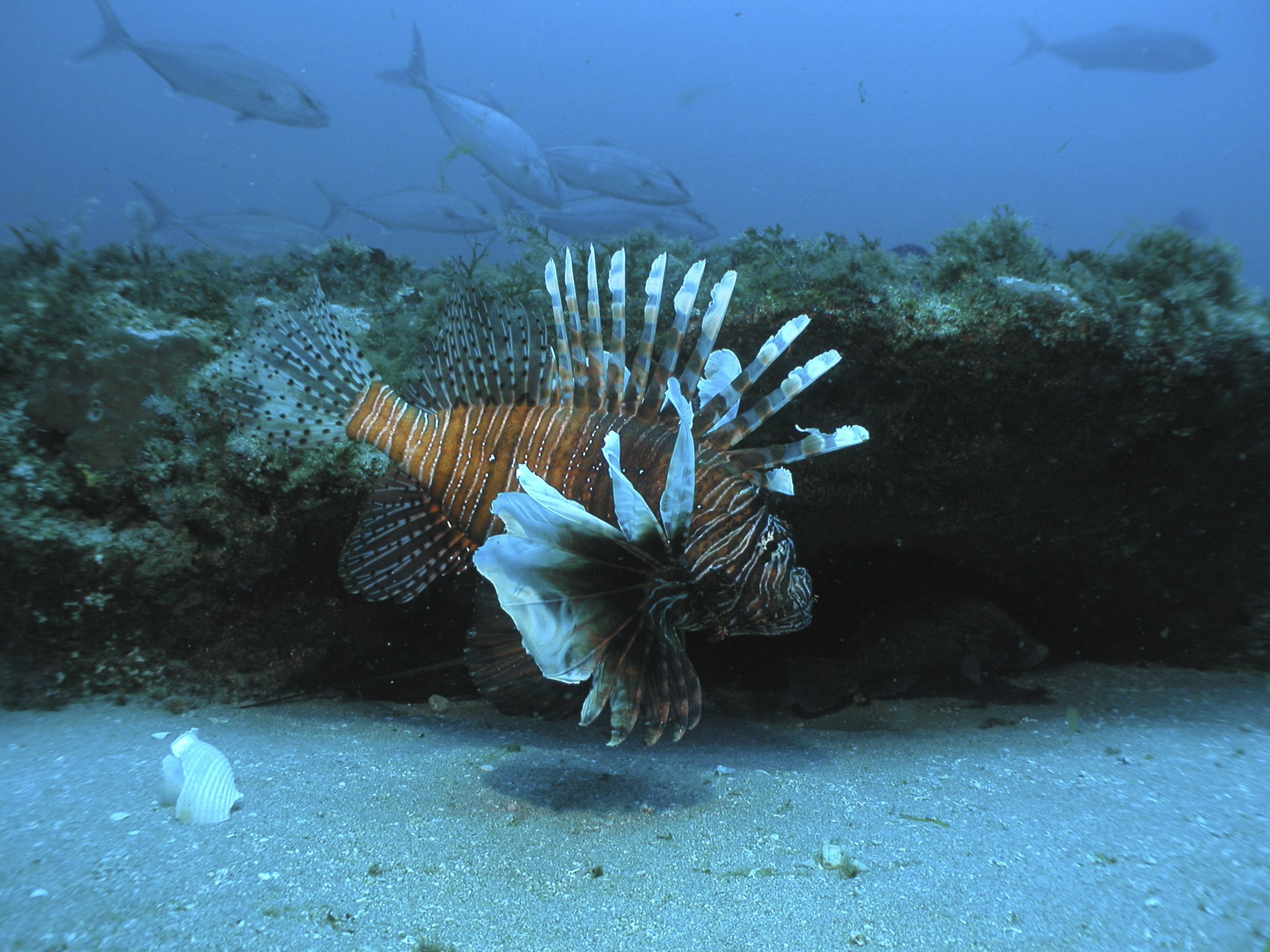Fighting an oceanic plague, a forkful at a time
San Juan, Puerto Rico ? Lionfish. It’s what’s for dinner.
Fighting a losing battle against the invasive, candy-striped aquarium fish that is the Western Hemisphere’s worst oceanic menace, conservationists, tour operators and chefs are out to slow their spread the only way they know how: finding and catching them fast, and then turning them into batter-fried, roasted and grilled delectables.

National Geographic chef Barton Seaver, left, offers sauteed lionfish to Renata Lana, a communications and outreach specialist from NOAA, Tuesday in the kitchen of Seaver’s home in Washington, D.C.
The hope is that by sponsoring fishing tournaments, encouraging anglers to go after the slow-swimming species and marketing it to restaurants and diners, the region may stave off an already severe crisis that could lay waste to the delicate web of undersea life if left unchecked.
“The goal is to eat it out of existence,” said U.S. National Oceanic and Atmospheric Administration outreach specialist Renata Lana, who is organizing a five-city tasting tour with celebrity chefs in the U.S. this summer as part of a campaign to get lionfish commercialized. “This is a fish that fishermen can go out and catch without worrying about overfishing — we want to overfish it!”

A lionfish swims at a depth of about 130 feet, roughly 55 miles off the coast of North Carolina, in this July 2006 file image. Conservationists and chefs are declaring open season on the invasive fish and serving it up.
It’s what’s for dinner
The tropical native of the Indian and Pacific oceans already has colonized large swaths of the Eastern Seaboard, the Caribbean and recently the Gulf of Mexico, and threatens to wreak ecological chaos as far away as South America.
Scientists say local predators such as sharks are put off by the poisonous spines and have shown little appetite for lionfish, leaving them free to multiply and fatten themselves on a smorgasbord of smaller swimmers.
Preparing the lionfish for human consumption, however, is simple. Unlike the pufferfish — a delicacy in Japan known as “fugu” that contains lethal toxins in various internal organs — the lionfish has venom only in its spines. Once those are sliced away or burned off with a torch, the meaty filets are ready for the frying pan.
Chefs say lionfish has a mild, versatile flavor that lends itself to everything from a basic fry to marinated ceviche. It can be dried into lionfish jerky, or served raw on sticky rice as sushi.
Nicely portioned for dinner plates, the filets marry well with assertive dashes of habanero, salt and lime juice, according to Julie Lightbourn, owner of Sip Sip restaurant on the Bahamas’ Harbour Island.
“It’s extremely mild, so we tend to season it quite heavily,” she said.
Bruce Sherman, a chef and partner of North Pond restaurant in Chicago who served lionfish during a pilot program last year, said there’s no reason it couldn’t become a popular entree if diners “can overcome their aquarium bias.”
“Texturally, it might be comparable in some sense to a monkfish,” Sherman said. “We would put it on the menu if it were available regularly.”
Fishing challenges
The trick is that lionfish often swim too deep for divers or linger around reefs and rocky crevices where they cannot be snared in commercial nets. The best and cleanest way to capture lionfish is when they venture into the shallows, by divers using hand nets to avoid reef damage and bycatch.
Nowhere are there more prowling lionfish than in the vast archipelago of the Bahamas, where they first appeared in 2004 and have been known to grow as big as footballs, gobbling up smaller creatures as if they were royalty being served peeled grapes.
Yet the local market there is still in its infancy, said Alexandra Maillis-Lynch, a caterer and chef at August Moon Cafe, the first Bahamian restaurant to start serving lionfish back in 2007.
“It is very difficult to get, believe it or not, because we just never get a consistent catch,” Maillis-Lynch said. “But when I do get lionfish from fishermen, I can’t serve them fast enough.”
Bahamian fishermen who do catch lionfish are able to charge a relatively high market price — about $12 a pound, compared with $3 to $5 for snapper — due to the lack of a formal fishery and factoring in a premium for the risk of a painful sting.
To encourage anglers, dive shops, activists and governments have organized lionfish-catching tournaments from South Carolina to Bonaire. In the Turks and Caicos Islands, the government put up a $3,000 prize for the first fisherman to catch 3,000.
Keeping lionfish in check
Meanwhile, a few U.S. companies also are trying to rev up the trade, developing relationships in the Caribbean and the Gulf with the goal of establishing a reliable supply.
David Johnson, whose Minnesota-based Traditional Fisheries trades in hand-caught walleye, is looking to expand into lionfish and has contacted a half-dozen cooperatives along Mexico’s Caribbean coast. He believes the lionfish has distinct commercial advantages despite the difficulty involved in the catch.
“It’s good for the fishermen because it’s a market that is 12 months per year,” Johnson said. “The season doesn’t close, because the goal is to get rid of it. When they close their lobster and their conch seasons, they can take lionfish all they want.”
It remains to be seen exactly how much impact fishing can have. For now, it’s the only hope in sight.
Scientists are still researching what keeps lionfish in check back home in their native range even as they’re going gangbusters in the Atlantic and Caribbean, mostly untouched by the local sharks, moray eels and grouper.

